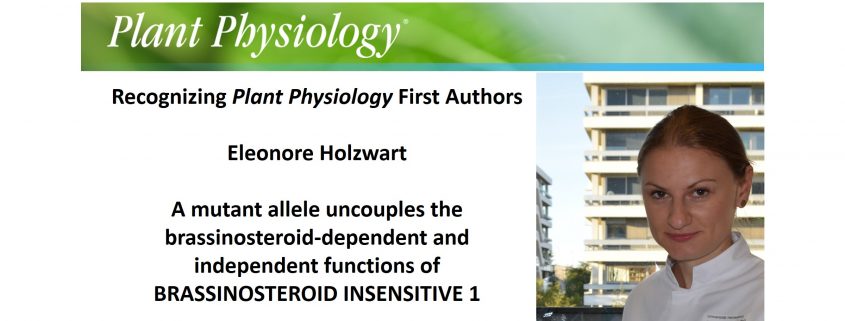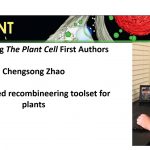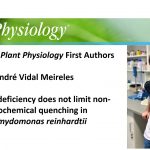Recognizing Plant Physiology first authors: Eleonore Holzwart
Eleonore Holzwart, first author of A mutant allele uncouples the brassinosteroid-dependent and independent functions of BRASSINOSTEROID INSENSITIVE 1
Current Position: Post-Doc, Plant Development, Centre for Organismal Studies, Heidelberg University
Education: PhD (2018) in Plant Molecular Biology at Centre for Organismal Studies, Heidelberg University; MSc (2014) in Biochemistry and BSc (2010) at University of Graz
Non-scientific Interests: reading, inline skating, travelling
Short bio: When I started my studies I had no idea I would end up studying plants. I started with molecular biology in my bachelors in Graz and I was mainly interested in biomedical research. However, after completing my bachelor’s thesis that focused on human cancer and my master’s thesis about role of mircoRNAs in human adipogenesis, I decided to completely change my field of research. I had never worked with plants before, but I have always been interested in signal transduction and development in general. I fell in love with the little Arabidopsis seedlings on the day of my job interview as technical assistant in Dr. Sebastian Wolfs lab. After 1.5 years as a technical assistant in the same lab, I decided to finally start a PhD on deciphering the role of RLP44 in cell wall signalling integration and vascular cell fate determination. The novel identified bri1 mutant bri1cnu4 was a central part of this work, through which we were able to further understand the complexity of plasma membrane bound proteins. During the project, we had a fantastic collaboration with Friederike Wanke, Nina Glöckner, and Klaus Harter at the ZMBP in Tübingen. Little by little, we gained further inside into the complex functions of plant plasma membrane receptors. As our understanding of a biological system increases, the more complex it appears, and I am even more fascinated by the molecular mechanisms nature evolved to build living organisms.




